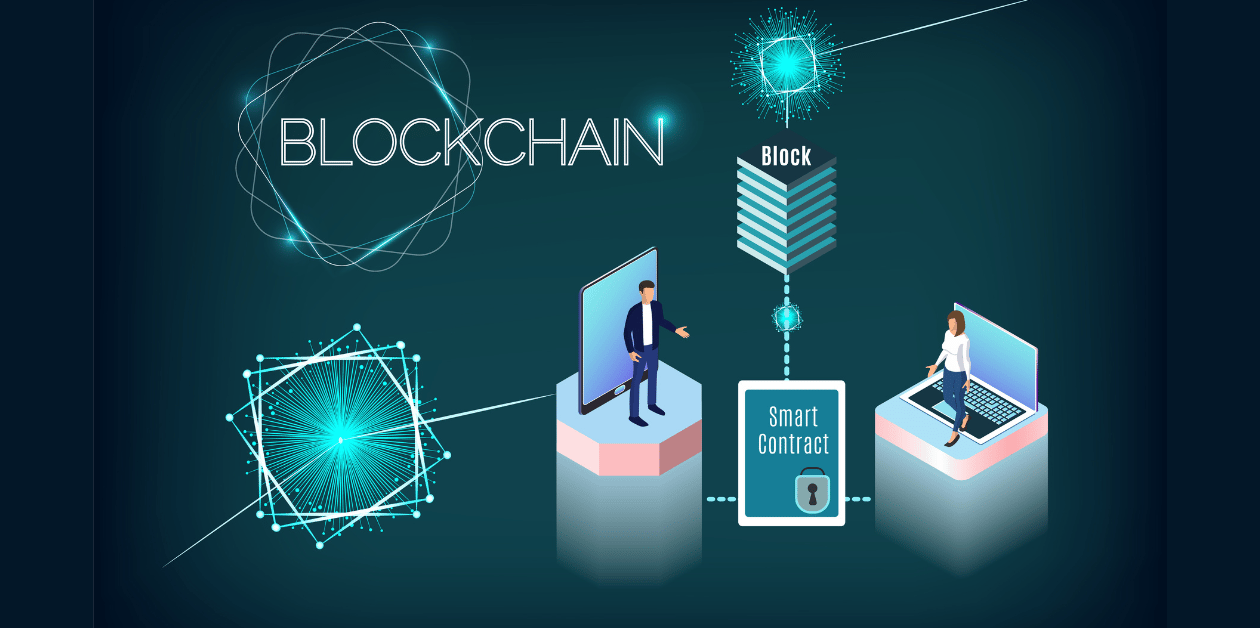In the current digital landscape, the need for secure, transparent, and efficient agreements is increasingly urgent. Introducing smart contracts—self-executing agreements that are transforming various sectors due to the capabilities of blockchain technology.
By eliminating intermediaries, smart contracts provide a more streamlined, cost-effective, and tamper-resistant approach to transaction execution. Blockchain technology plays a pivotal role in securing these contracts, reshaping trust in digital agreements and propelling us towards a future where transparency and security are fundamental.
Highlights
Growth of Smart Contracts
The adoption of smart contracts is rapidly increasing across multiple industries. The global smart contracts market was valued at approximately £684.3 million in 2022, with projections suggesting it could reach around £73.77 billion by 2030. This indicates an impressive compound annual growth rate (CAGR) of 82.2%.
The Banking, Financial Services, and Insurance (BFSI) sector leads this evolution, representing over 37% of the market share in 2022. This sector utilises smart contracts to facilitate peer-to-peer transactions, streamline insurance claims processing, and enhance Know Your Customer (KYC) procedures.
The Fundamentals of Smart Contracts
Smart contracts are autonomous programmes that execute specified actions once predetermined conditions are met. They are hosted on decentralised blockchain networks, effectively removing the need for middlemen, which enhances speed and reduces costs. Key features of smart contracts include:
- Automation: Self-executing contracts based on encoded terms diminish the need for manual input.
- Transparency: All participants have access to immutable contract terms saved on the blockchain.
- Trustless Operation: Unlike traditional agreements, smart contracts operate in a “trustless” environment, where participants depend on the code rather than each other’s integrity.
Security Features of Blockchain
The security of smart contracts is underpinned by several robust characteristics of blockchain technology, which include:
- Decentralisation: The distributed nature of blockchain ensures that no single entity can manipulate the data, making unauthorised alterations or interference nearly impossible.
- Cryptography: Blockchain employs advanced cryptographic algorithms to secure contract terms and transactions, ensuring that only authorised users can interact with the contract.
- Immutability: Once a smart contract is implemented on the blockchain, its data becomes immutable, meaning that it cannot be changed or deleted without the consensus of the entire network, effectively minimising the risk of tampering.
To bolster security further, consensus mechanisms are vital for validating transactions and preserving the integrity of the blockchain. These processes guarantee that all nodes agree on a single transaction history, significantly preventing issues such as double-spending.
Types of Consensus Mechanisms
Common consensus mechanisms include:
- Proof of Work (PoW): Miners solve complex mathematical problems to validate transactions.
- Proof of Stake (PoS): Validators are chosen based on the quantity of tokens they possess.
Moreover, the difference between public and private blockchains significantly affects how smart contracts function. Public blockchains promote transparency and openness but can expose themselves to certain security vulnerabilities due to their accessibility. Conversely, private blockchains offer enhanced privacy and control over data, albeit with a reduction in decentralisation.
Within this ecosystem, nodes within a blockchain network verify transactions by comparing them against their copies of the ledger. If the majority of nodes approve a transaction according to established consensus rules, it is then recorded on the blockchain, thus strengthening the overall security and dependability of smart contracts across various applications.
Enhancing Security of Smart Contracts
Securing smart contracts necessitates a comprehensive strategy. One of the most effective solutions is formal verification, a mathematical method that affirms the correctness of a contract before deployment. By detecting potential issues in the code early, formal verification ensures that only secure, reliable contracts are implemented.
Independent security audits are equally important for identifying vulnerabilities and ensuring adherence to best practices. These audits help increase user confidence and establish trust in the reliability of the contracts.
Furthermore, real-time monitoring tools are crucial in enabling organisations to detect and respond to suspicious activities as they occur, thereby providing an extra layer of protection against potential threats. By combining these approaches, organisations can significantly improve the security of their smart contracts, promoting wider adoption and confidence in blockchain-based agreements.
Future of Smart Contract Security
The growing acceptance of smart contracts underscores the need for more robust and resilient security frameworks. Blockchain technology, with its essential features of decentralisation, cryptographic security, and immutability, serves as a solid basis for constructing secure digital ecosystems.
However, the dynamic nature of blockchain applications calls for ongoing enhancements and collaboration among developers, security experts, and industry leaders to address emerging challenges.
Future advancements are anticipated to amalgamate artificial intelligence (AI) and machine learning (ML) to further elevate the efficiency and security of smart contracts. AI can automate real-time threat identification, while ML can assist in forecasting and averting vulnerabilities before they escalate into critical issues.
There is also a need for establishing standardized security protocols and guidelines for developing smart contracts to mitigate risks and set a universal standard for contract integrity. As blockchain technology evolves, these proactive methods will ensure that smart contracts remain secure, efficient, and widely accepted across various sectors.
The Rise of Stablecoins
Incorporating stablecoins within smart contracts adds another layer of functionality and security. Stablecoins are cryptocurrencies tied to stable assets, like fiat currencies, which help reduce volatility—a prevalent concern in the cryptocurrency market. By implementing stablecoins in smart contracts, businesses can guarantee predictable transaction values, making them more attractive for financial applications.
For example, in decentralised finance (DeFi), stablecoins facilitate lending and borrowing activities via smart contracts. This allows users to transact without the fear of sudden value shifts, thereby boosting user confidence and engagement in blockchain-based financial systems.
Looking Forward
The outlook for smart contracts is promising, as their utilisation continues to grow across various fields. Emerging technologies such as AI and IoT are expected to significantly enhance these capabilities by automating processes and enabling real-time data integration. Additionally, as regulatory frameworks evolve to embrace these technologies, increased legal recognition and support for smart contracts are likely.
The potential for interoperability among different blockchain platforms will also be a critical factor in their future development. This ability will facilitate seamless interactions between diverse systems and applications while encouraging innovation across industries.
As we advance, the integration of stablecoins with smart contracts exemplifies the growing incorporation of blockchain technology into the global financial ecosystem. By harnessing stablecoins within smart contracts, businesses can secure more reliable and transparent transactions while benefitting from blockchain’s efficiencies.
Ultimately, the seamless merger of stablecoins and smart contracts will unveil new opportunities for sectors, transforming how agreements are established and executed in this digital era.







